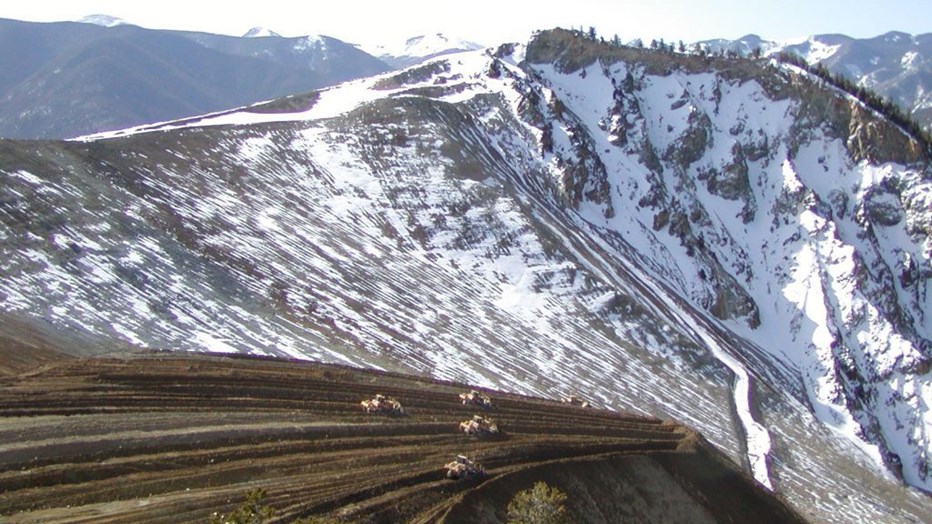The Goat Hill North Rock Pile Mitigation project is an example of Skanska’s expertise in the safe use of heavy equipment on challenging terrain.
Molycorp’s Questa Mine in remote northern New Mexico produces molybdenum, a metal used as an alloying element in steel making. An open pit mine was operated at Questa from the late 1950s to the mid 1970s. The Goat Hill North Rock Pile contains non-ore rock from the open pit mine that was placed in the steep upper end of Goat Hill Gulch.
Part of the non-ore rock was placed on an ancient landslide, which caused a large portion of the rock pile to slowly creep down slope. Molycorp’s geotechnical investigation indicated that the creeping pile posed no immediate threat to life or infrastructure on or off the property. However, the need to safely stabilize the sliding pile before performing any surface work in the area became clear.
A four-phase plan to stabilize the rock pile was prepared by Molycorp’s lead engineering consultant, Norwest Corporation, and was approved by the New Mexico state regulators.
In the summer of 2004, Molycorp selected Skanska through competitive bidding to perform the stabilization work.
The work area was almost half a mile long with slopes ranging from 38° to 45°. With project safety a paramount concern, continuous monitoring was undertaken to measure displacement, groundwater conditions and meteorological conditions.
The plan’s Phase 1 entailed processing, haulage and placement of 20,000 cubic yards of drain rock under what would become the toe of the stabilized pile. Phase 2 called for mass excavation of more than 500,000 cubic yards of stable rock pile to form an initial buttress in the toe area of the current slide zone.
The cut materials were moved down slope to build a stable buttress fill at slopes ranging from 2:1 to 2.5:1 (H:V).
Phase 3 construction consisted of removing and redistributing the top of the slide by excavating about 800,000 cubic yards of slide material down to native ground. These cut materials were used to form stable slopes at 2:1 to 3:1 (H:V) for the remainder of the buttress fill.
Phase 4 consisted of creating drainage to structures and controls to protect the re-graded surfaces during a one year monitoring period.
Once construction began, a fleet of dozers – three D-10’s, two D-9’s and a D-8 – proved very effective in moving the slide materials.
The safe work and quality on this project were the direct result of teamwork and relationships built on trust and integrity between Molycorp, Skanska and Norwest Corp.


